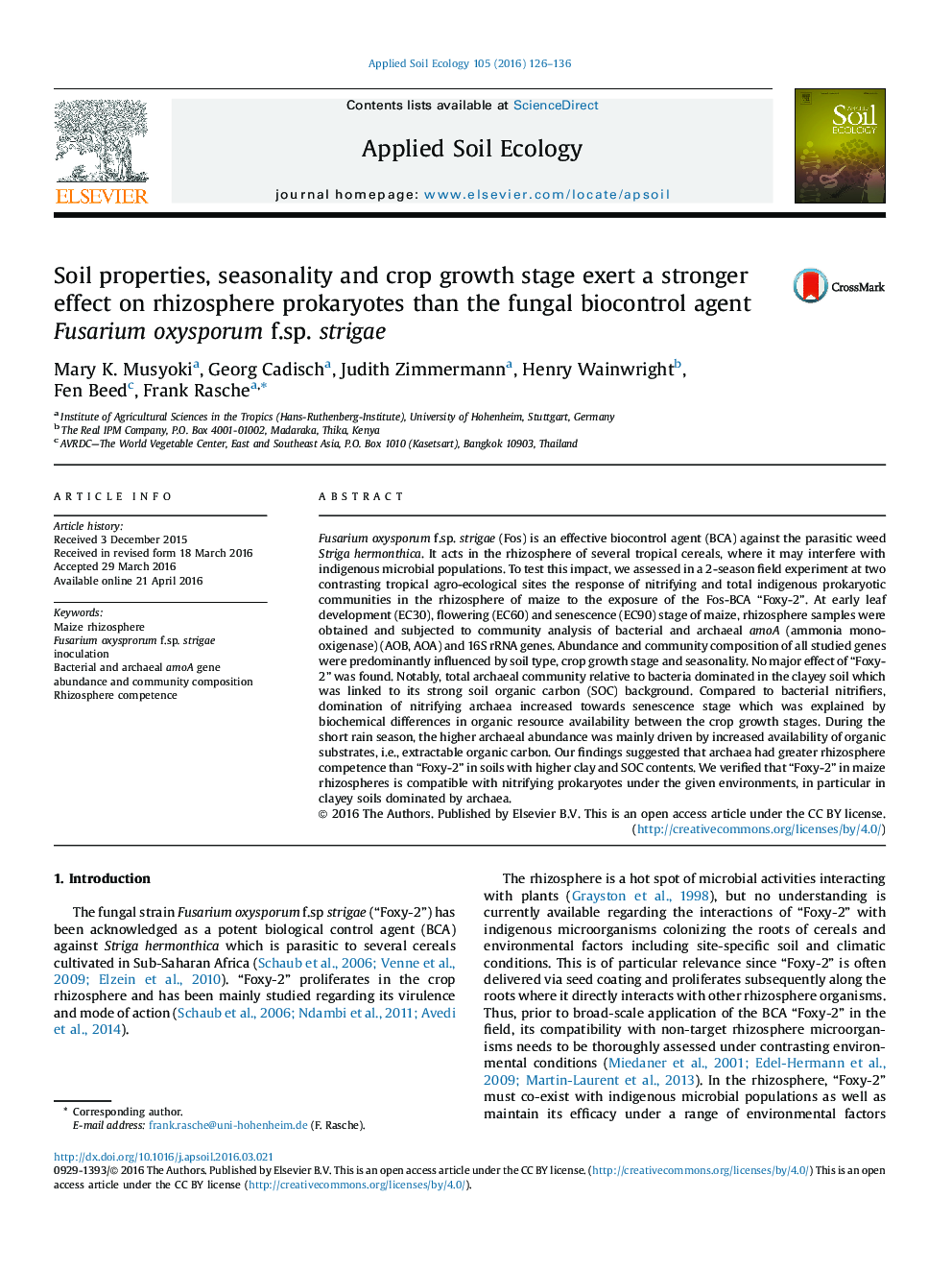| Article ID | Journal | Published Year | Pages | File Type |
|---|---|---|---|---|
| 6297754 | Applied Soil Ecology | 2016 | 11 Pages |
Abstract
Fusarium oxysporum f.sp. strigae (Fos) is an effective biocontrol agent (BCA) against the parasitic weed Striga hermonthica. It acts in the rhizosphere of several tropical cereals, where it may interfere with indigenous microbial populations. To test this impact, we assessed in a 2-season field experiment at two contrasting tropical agro-ecological sites the response of nitrifying and total indigenous prokaryotic communities in the rhizosphere of maize to the exposure of the Fos-BCA “Foxy-2”. At early leaf development (EC30), flowering (EC60) and senescence (EC90) stage of maize, rhizosphere samples were obtained and subjected to community analysis of bacterial and archaeal amoA (ammonia monooxigenase) (AOB, AOA) and 16S rRNA genes. Abundance and community composition of all studied genes were predominantly influenced by soil type, crop growth stage and seasonality. No major effect of “Foxy-2” was found. Notably, total archaeal community relative to bacteria dominated in the clayey soil which was linked to its strong soil organic carbon (SOC) background. Compared to bacterial nitrifiers, domination of nitrifying archaea increased towards senescence stage which was explained by biochemical differences in organic resource availability between the crop growth stages. During the short rain season, the higher archaeal abundance was mainly driven by increased availability of organic substrates, i.e., extractable organic carbon. Our findings suggested that archaea had greater rhizosphere competence than “Foxy-2” in soils with higher clay and SOC contents. We verified that “Foxy-2” in maize rhizospheres is compatible with nitrifying prokaryotes under the given environments, in particular in clayey soils dominated by archaea.
Related Topics
Life Sciences
Agricultural and Biological Sciences
Ecology, Evolution, Behavior and Systematics
Authors
Mary K. Musyoki, Georg Cadisch, Judith Zimmermann, Henry Wainwright, Fen Beed, Frank Rasche,
